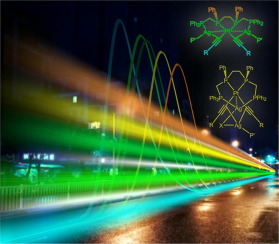Luminescent oligonuclear metal complexes and the use in organic light-emitting diodes
Qian-Chong Zhang, Hui Xiao, Xu Zhang, Liang-Jin Xu, Zhong-Ning Chen
Index: 10.1016/j.ccr.2018.01.017
Full Text: HTML
Abstract

More and more oligonuclear metal complexes have been used as light-emitting materials for the fabrication of high-efficiency organic light-emitting diodes (OLEDs). This review article is focused on highlighting recent advances in the design of luminescent oligonuclear metal complexes and the use as phosphorescent dopants to achieve efficient electroluminescence. The easy accessibility at mild conditions and the strong resistance to thermal and irradiation degradation make phosphorescent metal cluster complexes have great potential to attain various colored electroluminescence for practical application in flat panel display and daily lighting.
|
Tridentate pyridine–pyrrolide chelate ligands: An under-appr...
2018-03-28 [10.1016/j.ccr.2018.01.012] |
|
Recent advances about metal–organic frameworks in the remova...
2018-03-19 [10.1016/j.ccr.2018.03.015] |
|
Recent advances in ultraviolet and deep-ultraviolet second-o...
2018-03-15 [10.1016/j.ccr.2018.02.017] |
|
Molecular and supramolecular chemistry of mono- and di-selen...
2018-03-15 [10.1016/j.ccr.2018.03.001] |
|
Biological applications of Ru(II) polypyridyl complexes
2018-03-09 [10.1016/j.ccr.2018.02.013] |